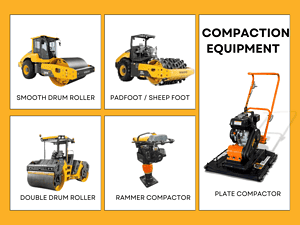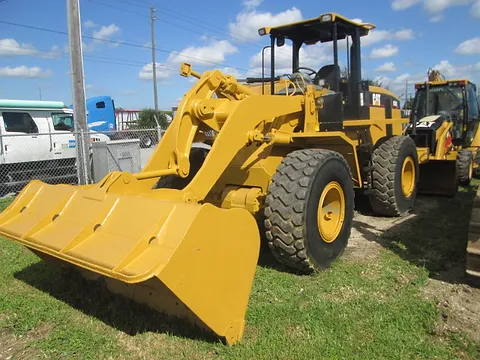Figure out which CAT loader is best for your job site of the many models available can be overwhelming. Choosing wrong can lead to inefficiency, higher costs, and safety concerns. Luckily, the CAT loader size chart gives the essential specs you need to pick the perfect machine for your needs and get the best performance for your money.
Le Tableau de taille de chargeur de chat is your essential guide to selecting the right machine for your project. It offers a comprehensive comparison of key loader specifications like weight, lifting capacity, engine power, and dimensions. This tool helps you make an informed decision, ensuring you choose a loader that fits your site’s requirements, boosts productivity, and keeps costs low. Whether you’re working on a small urban site or a large construction project, the Tableau de taille de chargeur de chat can guide you to the perfect match.
Let’s go deeper on how you use the CAT loader size chart to get the optimal machine for your job site.

Table des matières
BasculerWhat is the CAT Loader Size Chart?
Le CAT loader size chart is a detailed tool outlining all the key specs for each CAT loader model, so you can weigh and balance and make the right decision based on weight, capacity, dimensions, lifting ability, and engine power. Use it to compare all the loader models side by side and pick the one that does what you need it to on your project.
Key Features of the CAT Loader Size Chart
| Spécification | Explanation |
| Dimensions | Length, width, and height of the loader. |
| Poids de fonctionnement | The weight of the loader, affecting mobility and transport. |
| Capacité de levage | Maximum weight the loader can lift, crucial for heavy-duty tasks. |
| Engine Power | The power of the loader’s engine, which impacts performance. |
| Capacité de seau | The volume of material the loader’s bucket can carry. |
How the CAT Loader Size Chart Helps in Selecting the Right Machine
The CAT loader size chart is more than just a comparison of sizes. It’s a decision-making tool to help you decide, based on specifics of your project like how much room you have to work with, how much heavy lifting you have to do, and what you need it to do for you.
Matching Loaders to Worksite Requirements
Understanding your space and what that requires from your loader is a critical part of selecting a machine. The use of the CAT loader size chart helps you do that by comparing the loaders based on their physical size and dimensions. This will help you get a machine that fits the physical layout of your job site. A large machine might be better for open work, while a small machine would fit better in close quarters or urban construction.
| Loader Model | Worksite Size | Dimensions (L x W x H) | Best Use |
| CAT 902M | Small, Tight Spaces | 5,400 mm x 2,200 mm x 2,600 mm | Urban areas, landscaping |
| CAT 966M | Medium, Open Spaces | 8,500 mm x 3,000 mm x 3,800 mm | Medium construction |
| CAT 988K | Large, Expansive Areas | 10,200 mm x 3,800 mm x 4,200 mm | Large earthmoving projects |
Assessing Digging Depth and Reach
A major part of selecting a loader that’s right for you is how far you have to dig and reach with the loader itself as it performs whatever excavation tasks you need. For deep excavation work, a big machine with a long stick and long bucket will do a better job than a small one that may not reach as far down.
| Loader Model | Max Digging Depth | Max Reach |
| CAT 902M | 3.0 meters | 5.0 meters |
| CAT 966M | 4.0 meters | 6.5 meters |
| CAT 988K | 5.5 meters | 7.0 meters |

Popular CAT Loader Models and Their Sizes
When you want to choose a CAT loader, you need to understand how popular models shake out when it comes to key specs. Different loaders are best for your specific task and the use of a CAT loader size chart allows you to compare things like operating weight, engine power, lifting capacity, and bucket size against each other to match that up with what you are trying to do.
| Loader Model | Operating Weight (kg) | Engine Power (HP) | Lifting Capacity (kg) | Capacité du seau (M³) |
| CAT 902M | 6,000 | 75 | 3,000 | 1.3 |
| CAT 966M | 18,500 | 200 | 8,500 | 3 |
| CAT 980M | 23,000 | 250 | 10,000 | 4.2 |
| CAT 988K | 33,000 | 400 | 12,500 | 6 |
CAT 902M: Compact for Small Jobs
CAT 902M This is a cute little loader at 6,000 kg and 75 Horsepower. It’ll pick up 3,000 kg, or six thousand pounds! This could be used for light duties like landscaping or small construction projects and has a 1.3 cubic meter or 1.7 cubic yard bucket on it for moving material around in confined spaces.
Best for:
- Urban sites
- Tight spaces
- Light tasks
CAT 966M: Balanced Power
CAT 966M Now you have a mid-size 966 at 18,500 kilograms with 200 Horsepower. It can pick up an 8,500-kilogram or seventeen-thousand-pounds of material. They typically use this size of loader for mid-size construction projects like roads, and they can move material for you.
Best for:
- Medium projects
- Heavy lifting
- Material handling
CAT 980M: Heavy-Duty Performance
CAT 980M The 980 is a 23,000-kilogram machine with 250 Horsepower. It will pick up 10,000 kilos or 20,000 pounds of whatever you want to haul around with the 4.2 cubic meter or 5.5 cubic yard bucket. These are typically used in more demanding applications like moving dirt for earthwork on construction sites, rock in a quarry, or any heavy hours.
Best for:
- Heavy-duty construction
- Earthmoving
- Large-scale projects
CAT 988K: The Ultimate Heavy-Duty Loader
CAT 988K Now the 988 is 33,000 kilograms and 400 Horsepower. They can pick up 12,500 kilograms or twenty-five-thousand-pounds with a six cubic meter or 7.85 cubic yard bucket. This puppy is used for mining, quarrying, or large infrastructure projects.
Best for:
- Mining
- Large material handling
- Heavy industry projects

Understanding Lifting Capacity and Maneuverability
CAT loaders are a very versatile piece of equipment because you can equip them with different attachments so they can help you with a variety of tasks. If you think a CAT loader is what you need, check with a Mountain West CAT sales rep to help you make the right choice for your job. And remember, the two big factors to consider when you’re thinking about a CAT loader are how much it can lift and how well it moves around.
Capacité de levage
The lifting capacity of a loader tells you how much weight this machine can safely lift. The larger the loader, the more it can lift. When you think about lifting capacity, think about how much material you’ll need to move. If you have a lot of lifting to do, you need a larger machine that can handle the weight.
| Loader Model | Lifting Capacity (kg) | Best Use |
| CAT 902M | 3,000 | Landscaping, small projects |
| CAT 966M | 8,500 | Medium-scale construction |
| CAT 988K | 12,500 | Heavy-duty earthmoving, mining |
Maniabilité
Maneuverability expresses how well your machine moves around. If you’ve got a construction site with a lot of obstacles, you will want a smaller machine because it gets in and out of tight spots easier. Also, if you plan to use it on smaller urban job sites or places where you have less room to move, you generally want a smaller machine.
| Loader Model | Turning Radius (m) | Maniabilité |
| CAT 902M | 3.5 | High (Ideal for tight spaces) |
| CAT 966M | 5.5 | Moderate (Can maneuver in open areas) |
| CAT 988K | 6 | Low (Best suited for open fields) |
How Size Affects Fuel Efficiency and Operating Costs
Technologies such as fuel-efficient engines and hybrid drive systems are also finding their way into different sizes of loaders, and these technologies have a significant impact on the fuel efficiency of different size loaders. Keep in mind that larger loaders use more fuel, but if you have a big job that requires a particular tool, by using a larger loader, you might need one instead of three smaller ones. So the cost of buying and owning one machine versus three smaller machines can be a big cost savings. But for smaller jobs, a smaller machine will be more fuel efficient, so you need to consider the work being done with the machine and its overall impact to your organization.
Fuel Efficiency Comparison
To better understand how loader size impacts fuel consumption, we can compare the fuel efficiency and operating costs of different models. The following table outlines the fuel consumption rates (measured in liters per hour) and operating costs (measured in USD per hour) for four popular CAT loader models:
| Loader Model | Fuel Efficiency (L/hr) | Operating Costs (USD/hr) |
| CAT 902M | 12 | 35 |
| CAT 966M | 20 | 50 |
| CAT 980M | 25 | 65 |
| CAT 988K | 30 | 80 |
Smaller models like the CAT 902M consume 12 liters of fuel per hour, making them an economical choice for light-duty tasks. Their operating costs are relatively low at USD 35 per hour, making them ideal for projects that require minimal lifting and digging.
Larger models like the CAT 988K, however, consume 30 liters per hour and have a higher operating cost of USD 80 per hour. These loaders are designed for heavy-duty tasks and large-scale projects, offering the power and capacity needed to handle tough jobs.
So, when choosing the right wheel loader for your project, you should consider fuel consumption and operating costs in addition to upfront price. You’ll want to balance the initial cost with the ongoing costs to determine the most cost-effective solution for your unique situation. If you’re working on a smaller project or have a tight budget, you could save a lot of money on fuel by choosing a smaller loader. But for large-scale operations, you could end up being much more productive and ultimately spending less, even though the bigger loader burns more fuel.

Choosing the Right CAT Loader Size for Your Worksite
Select the right size of CAT loader for your project to get the most productivity for your money. The CAT loader size chart is invaluable to help you pick the right one based on the size and nature of your project.
Key Factors to Consider
Site Layout:
If the site is tight or narrow, a small loader like the 902M is right for the job. Small loaders maneuver well in tight areas. If the site is big or wide open, use a bigger loader. They can do the same work, handle more weight, and take less time—all because they’re bigger. Big loaders like a 980M or 988K will power in and out faster than a small loader.
Project Type:
Excavation—digging deep trenches—requires a big loader like a 966M or 980M to carry the weight when digging (operating large buckets). Material handling (moving dirt, rocks,) requires a big loader (a 980M or 988K) because you can move a lot more material a lot quicker
Terrain Type:
If you’re going to be in rough, challenging areas, the 980M or 988K are the way to go because their larger tires and bigger frames offer increased stability, keeping you (the operator) out of trouble.
Other Considerations When Selecting a CAT Loader
In conclusion, the decision to choose a CAT loader is less about the loader and more about the individual job, the site layout, the project, and the job location. The loader has to fit the job site and has to work. If the only way to make it work is with a big loader, get a big loader. When it comes to CAT loaders, size matters.
Attachment Compatibility
However, if you cannot move the loader to and from the job site, nothing else matters. In that case, you may want to look at a smaller loader if it will fit your job. With any loader you rent or own, you also have to transport it to and from the job site, so if you have to pay to transport a big loader back and forth, it’ll cost you more than using a smaller loader.
Here’s a breakdown of common attachments and which models are compatible:
| Loader Model | Compatible Attachments |
| CAT 902M | Bucket, forks, grapple |
| CAT 966M | Bucket, forks, pallet forks |
| CAT 980M | Bucket, forks, ripper |
| CAT 988K | Ripper, large bucket, forks |
However, those are the extremes. Most situations will have exceptions. After you’ve rented or bought five loaders, you’ll have a better idea which loader to buy or rent for a specific job. Regardless of the size of the loader, it has to support the attachments you are going to use.
Transport and Logistics
Although size matters, other factors also come into play when you’re thinking about the “right” CAT loader for a specific job. One of those factors is how you will get the loader to the job and get it back. The size of the loader impacts the method of transportation required.
The bigger the loader, the harder it is to ship. For example, a 988K is going to be much harder and more expensive to ship long distance (or to ship overseas) than a 902M. The bottom line is: the smaller the loader, the less expensive it is to ship and the faster you can receive it. When shipping long distances or overseas, the cost of shipping and shipping method are concerns you need to address with whomever is supplying the loader.
How to Read the CAT Loader Size Chart: A Step-by-Step Guide
To use the Tableau de taille de chargeur de chat effectively, follow these simple steps:
- Evaluate Operating Costs: Compare the estimated costs of fuel, maintenance, and repairs for each model based on the hours you plan to use the loader.
- Consider Rental Possibilities: If you don’t need a loader very often, explore the possibility of renting equipment as an alternative to buying.
- Read Testimonials and Case Studies: Review testimonials, case studies, and reviews from other loader users to learn about their experiences and the results they achieved.
- Consult with an Expert: Reach out to a loader expert or salesperson and explain your project requirements. They can help you choose the right loader for your specific situation.
Understanding both how to read the chart and how to use it when selecting a machine will allow you to choose the ideal loader for your project with confidence, ensuring it will meet your operational and financial goals.
Conclusion
The CAT loader size chart is a great tool for making an educated decision on the loader to use for your CAT loader project. By figuring out the different models, their specs, and their performances, you’ll be able to select the right loader to fit your job and your worksite. Whether you’re doing a project in a city with tight quarters or on a large construction site, use the CAT loader size chart to make sure you select a machine that will maximize productivity, minimize costs, and work for you long term.
Use the CAT loader size chart to look at all the different factors—size, lift capacity, fuel efficiency, and operational costs—and select the loader you need to get the job done the right way. Go to the CAT loader size chart, take the time to do the research, and make the best decision for your worksite.
Suivez-nous sur:Youtube.










